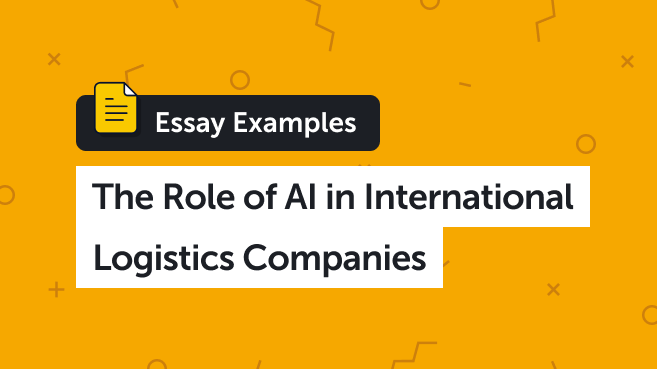The Role of AI in International Logistics Companies


The realm of logistics stands as one of the planet’s intricate labyrinths, intertwining the strands of goods and services, ensuring their seamless flow across the globe. This sector, acting as the backbone of the world’s economy, has witnessed profound evolutions over time. Among these waves of change, technology has consistently emerged as the most potent catalyst, with Artificial Intelligence (AI) heralding the latest renaissance.
AI, with its multifaceted capabilities, has bestowed the logistics industry with innovative avenues to elevate their operations and, by extension, their profitability. By seamlessly integrating real-time data analysis and automation, AI offers logistics entities an edge in an increasingly competitive arena. Whether it’s forecasting demand fluctuations, devising optimal delivery routes, or streamlining warehouse dynamics, AI’s interventions are omnipresent.
A standout feature of AI in this sector is its unparalleled aptitude for data assimilation. Its prowess in swiftly processing colossal data chunks, discerning patterns, and prognosticating outcomes is unparalleled. Such predictive strengths arm logistics firms with the foresight to pinpoint impending challenges, ensuring they’re always a step ahead with proactive strategies. Given the deluge of data generated, it’s hardly surprising that AI stands as the tech lynchpin for many logistics platforms.
Drilling down further, AI’s transformative touch is profoundly evident in warehouse operations. The dawn of AI-propelled robots has revolutionized tasks like sorting, picking, and inventory arrangement, exponentially hastening the order-to-delivery timeline. Couple this with AI-infused sensors and surveillance mechanisms, and you have a holistic real-time inventory surveillance system, drastically minimizing discrepancies and losses. Such innovations have morphed erstwhile conventional warehouses into state-of-the-art hubs, primed to cater to the instantaneous demands of the contemporary consumer while enhancing their overall experience.
Yet, in this grand tapestry of AI-driven metamorphosis, an ironic pattern emerges. Several companies, despite having access to these technological marvels, falter in their AI adoption. The roadblock? A deeply entrenched resistance to altering their operational mindset and behavior. The real essence of digital transformation isn’t just in the adoption of advanced tools, but in fostering an environment that’s receptive to change and innovation.
To encapsulate, the canvas of international logistics is dotted with AI’s indelible marks. Its multifarious functionalities are not just conveniences but necessities for firms striving for operational excellence and an edge in the market. The prescient nature of AI allows businesses to navigate the uncertain terrains of logistics with confidence. With AI-driven warehouse reinventions, the logistics sector is well-poised to meet the brisk demands of the modern-day consumer. But the heart of the matter remains – a genuine embrace of AI necessitates an intrinsic organizational evolution, both in thought and action.
Sources
Azadegan, I. (2023, May 28). Top 5 Uses of AI in Logistics- A Comprehensive Overview. DFreight. https://dfreight.org/blog/top-5-uses-of-ai-in-logistics/
De Muynck, B. (2023, August 17). The True Role Of AI In Logistics. Forbes. https://www.forbes.com/sites/forbestechcouncil/2023/08/17/the-true-role-of-ai-in-logistics/
Gordon, C. (2021, September 5). The Rise Of AI In The Transportation And Logistics Industry. Forbes. https://www.forbes.com/sites/cindygordon/2021/09/05/the-rise-of-ai-in-the-transportation-and-logistics-industry/
Thomas, M. (2022). 15 Examples of AI in Supply chain and Logistics. Built In. https://builtin.com/artificial-intelligence/ai-in-supply-chain